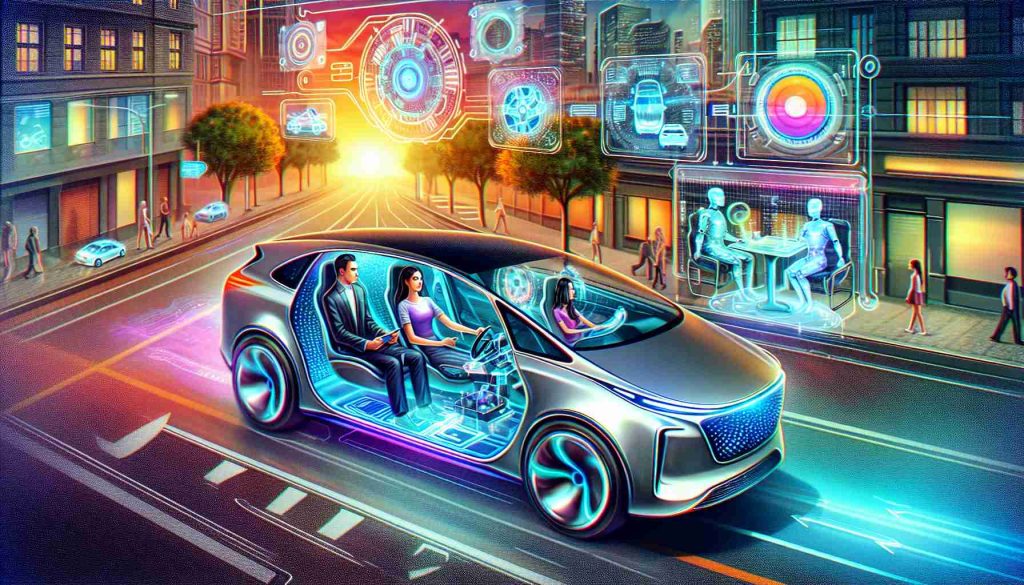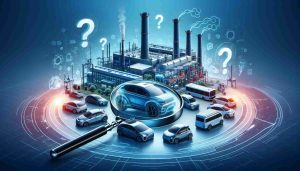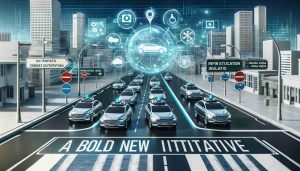Revolution in Driving: Hands-Free Technology is Coming

The future of driving is about to change dramatically. Rivian, the electric vehicle manufacturer, has ambitious plans for its advanced driver assistance systems, gearing up for a release in 2025, followed by an “eyes-off” driving experience in 2026, as outlined by CEO RJ Scaringe.
Currently, Rivian’s Gen 2 vehicles come equipped with the Rivian Autonomy Platform, designed to aid drivers, who are still required to maintain control over their vehicles. In a climate where automakers are racing to enhance autonomous driving capabilities, Rivian is poised to take a significant step as scrutiny around these technologies intensifies.
The National Highway Traffic Safety Administration has recently opened an investigation into Tesla vehicles concerning safety incidents tied to remote operation features. Meanwhile, Rivian secured a substantial $6.6 billion loan agreement with the U.S. Department of Energy earlier this year to support the establishment of its new manufacturing site in Georgia.
In a major policy shift, former President Trump rescinded a 2021 order that aimed for electrification of half of U.S. vehicle sales by 2030, alongside reviewing EV tax credits. These developments highlight the evolving landscape of the electric vehicle industry as Rivian and other manufacturers navigate regulatory hurdles while striving for innovation in driving technology.
Revolutionizing Mobility: The Broader Implications of Autonomous Driving
The emergence of advanced driver assistance systems (ADAS) and the move toward fully autonomous vehicles is not merely a technical evolution; it represents a profound societal shift. As Rivian positions itself at the forefront of this change, beyond just innovation, autonomous technology holds the potential to reshape urban mobility, influence employment, and redefine our environment.
With increased automation in vehicles, we may witness significant cultural shifts in how we perceive travel. Familiar concepts like ownership and usage of personal vehicles could diminish, ushering in an era where mobility as a service dominates urban landscapes. Cities might evolve to prioritize pedestrian spaces and incorporate smart infrastructure, reducing car dependency.
Economically, the transition could lead to substantial job reallocation. Estimates indicate that by 2030, millions of jobs in transportation could be affected, either through automation or the demand for new skill sets in electric vehicle maintenance and software programming. This shift may require comprehensive retraining programs to support affected workers.
From an environmental standpoint, autonomous vehicles, especially electric ones like those from Rivian, promise lower emissions if widely adopted. However, reliance on personal vehicle ownership could offset these gains unless effectively managed.
The future trends in autonomous driving will not only dictate safety regulations but will also reshape our environmental policies and labor markets, emphasizing that as the road ahead becomes more automated, society must adapt holistically to these changes.
The Future of Driving: Rivian’s Game-Changing Plans Unveiled
## Rivian’s Vision for Autonomous Driving
Rivian, an innovative player in the electric vehicle (EV) market, is set to reshape the future of driving with its ambitious plans for autonomous technology. CEO RJ Scaringe revealed that the company is preparing for a major leap in driver assistance systems, with features set to roll out in 2025, followed by an “eyes-off” driving experience in 2026. This technology aims to provide a seamless driving experience that significantly reduces the need for driver intervention.
Rivian Autonomy Platform
At present, Rivian’s Generation 2 vehicles are equipped with the Rivian Autonomy Platform. This system aids drivers but still requires them to maintain control of their vehicles. The platform represents a crucial first step towards full autonomy, addressing current safety regulations and consumer concerns regarding driver assistance features.
Industry Landscape and Regulatory Challenges
As Rivian pushes forward, the scrutiny surrounding autonomous technologies continues to grow. Recently, the National Highway Traffic Safety Administration (NHTSA) launched an investigation into Tesla vehicles, focusing on safety incidents linked to their remote operation capabilities. This highlights the sensitive nature of advancing driver assistance technologies and the need for stringent safety measures before wider adoption.
Financial Backing for Expansion
Rivian’s growth is further supported by a substantial $6.6 billion loan agreement with the U.S. Department of Energy. This funding is vital for establishing a new manufacturing site in Georgia, which will play a key role in ramping up production of Rivian’s vehicles and enhancing its technological capabilities.
Impacts of Policy Changes on the EV Market
The electric vehicle industry is also facing significant shifts in policy. A notable move came when former President Trump rescinded a 2021 order that aimed for 50% of U.S. vehicle sales to be electric by 2030. This policy reversal, combined with a review of EV tax credits, poses new challenges for manufacturers like Rivian as they strive to navigate the evolving regulatory landscape while fostering innovation.
Future Predictions for Rivian
As Rivian aims for “eyes-off” driving by 2026, several trends and innovations are likely to emerge in the EV market:
– Increased Safety Features: As the company develops its autonomy capabilities, we can expect a focus on integrating advanced safety measures designed to protect both drivers and pedestrians.
– Sustainability Initiatives: Rivian’s commitment to sustainability will continue to drive its innovations, with efforts to reduce the carbon footprint of its manufacturing processes and increase the company’s reliance on renewable resources.
– Market Positioning: Rivian’s focus on adventure and exploration through vehicles tailored for outdoor activities sets it apart from other EV manufacturers, potentially attracting a niche market segment.
Comparison with Competitors
When compared to other major players like Tesla and Ford, Rivian’s unique positioning as an adventure-oriented EV manufacturer presents both opportunities and challenges. While Rivian progresses in autonomous driving technology, it must also keep pace with competitors who are rapidly enhancing their own systems.
# The Pros and Cons of Rivian’s Approach
Pros:
– Innovative technology with a unique market focus.
– Strong financial backing for expansion and development.
– Commitment to sustainability in manufacturing.
Cons:
– Potential vulnerabilities to regulatory changes.
– Growing competition in the EV segment.
– The necessity to ensure safety amid technological advancements.
Conclusion
Rivian stands at a pivotal moment in the evolution of electric vehicles and autonomous driving technology. With its ambitious plans for the future and substantial financial support, the company is making strides that could revolutionize the driving experience. As the industry navigates regulatory challenges and competition intensifies, Rivian’s commitment to innovation and sustainability will be essential in securing its place in the EV market.
For more insights on electric vehicles and the future of driving, visit Rivian.



